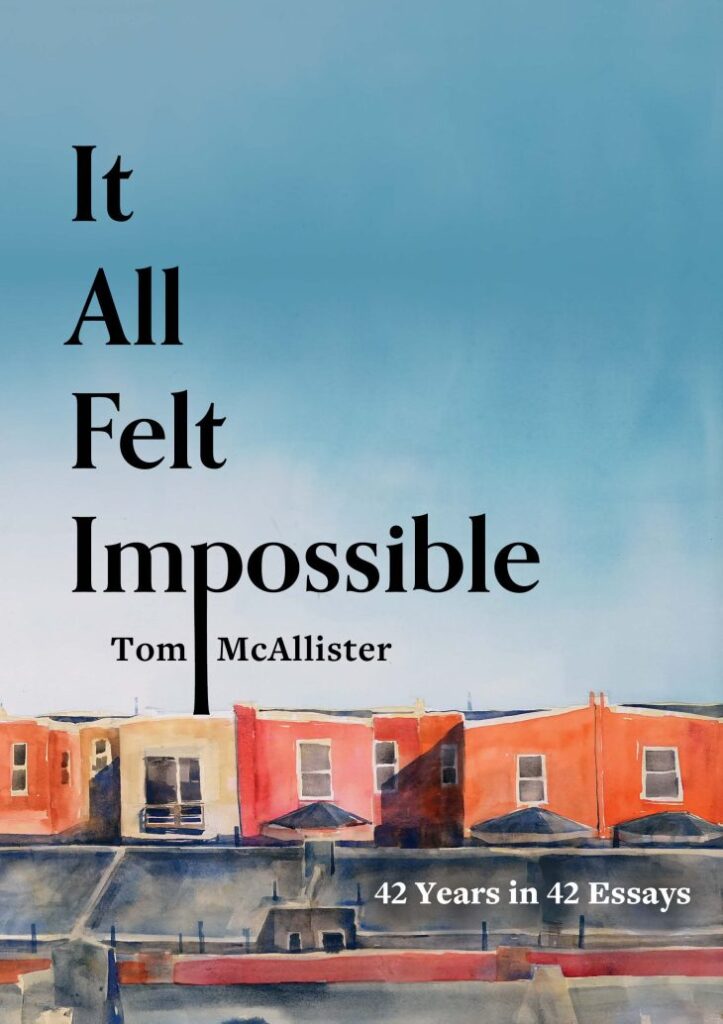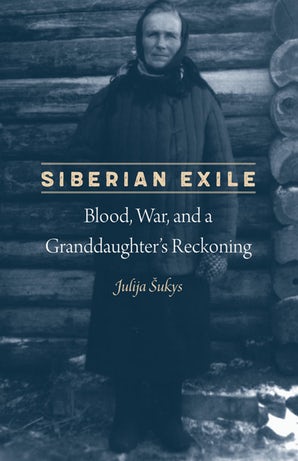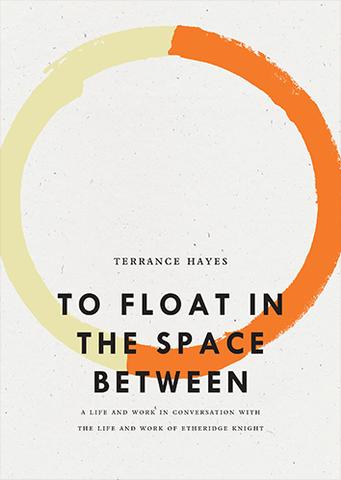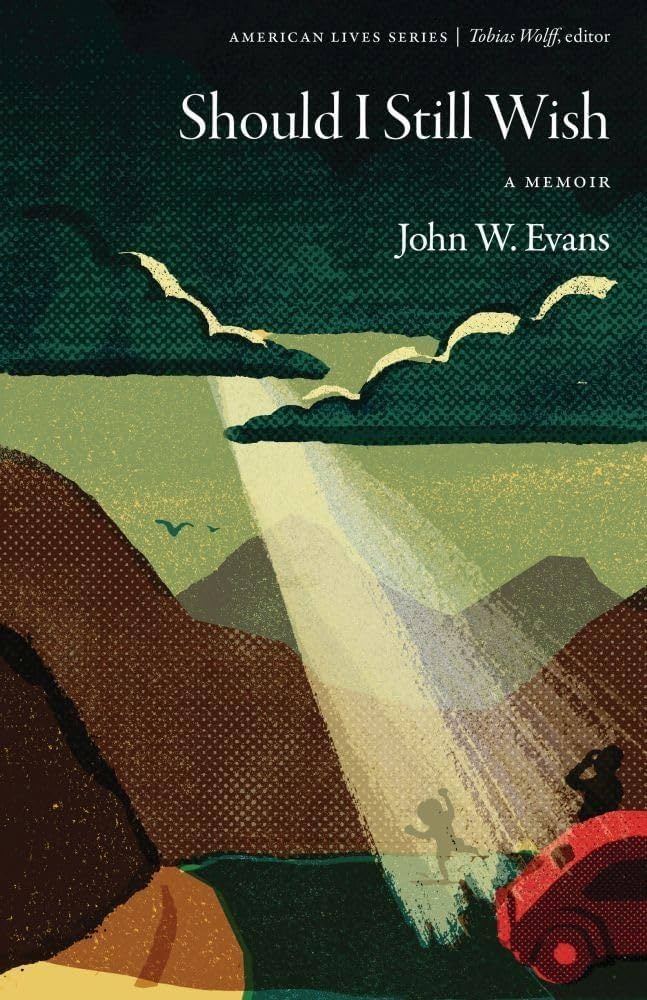By Glen Retief
on I Will Never See the World Again: The Memoir of an Imprisoned Writer by Ahmet Altan
No Ashes in The Fire: Coming of Age Black & Free in America by Darnell L. Moore
A Line in the River: Khartoum, City of Memory by Jamal Mahjoub
1.
In Carolyn Forché’s introduction to the seminal 2014 Norton anthology, Poetry of Witness: The Tradition in English, 1500-2001, she has this to say about poetry shaped by, and reacting to, conditions of political extremity:
Witness, then, is neither martyrdom nor the saying of a judicial truth, but the owning of one’s infinite responsibility for the other one (l’autri). It is not to be mistaken for politicized confessionalism . . . . In the poetry of witness, the poem makes present to us the experience of the other . . . .”
Memoir has, of course, never carried the cachet of poetry. Yet like the poetry or fiction of witness, the outward-looking, politically engaged memoir and essay have a rich and respected literary pedigree, including slave narratives (the predominant form of African-American literature until the twentieth century); Mark Twain’s pamphlet about the genocide in the Congo Free State; James Baldwin’s and George Orwell’s searing dissections of racism and colonialism; Ivan Turgenev’s descriptions of Jean-Baptiste Tropmann’s execution; and Mary McCarthy’s brilliant denunciations of American Stalinism, to name just a few.
At its apex, the memoir of political witness, like its poetic sibling, transcends simple confessionalism or historic documentation to provide a window into what Faulkner called “the human heart in conflict with itself” and what Forché names as a “wound” in consciousness, where “language breaks, becomes tentative, interrogational, kaleidoscopic.” Indeed, Forché’s own powerful What You Have Heard Is True: A Memoir of Witness and Resistance, a finalist for the 2019 National Book Award in Nonfiction, is a fine example of nonfiction prose that “makes present the experience of the other,” in this case the lives of El Salvadorans during the country’s 1980s civil war. (Disclosure: I am thanked in Forché’s acknowledgements for reading early drafts of that book).
Contemporary memoirists drawn to this act of outward-looking witness have deployed chiefly three formal approaches: the deployment of investigative journalistic techniques to confirm and elaborate one’s personal history (examples include Aminatta Forna’s Devil that Danced on the Water and Rian Malan’s My Traitor’s Heart); the novelistic reconstruction of traumatic experience (Forché’s What You Have Heard Is True; Ismael Beah’s A Long Way Gone; and Rigoberta Menchú’s I, Rigoberta Menchú); and the essayistic or ruminative approach, which uses the experience of extremity to launch a meditation on root causes and their contexts (Czeslaw Milosz’s The Captive Mind).
Three memoirs of political witness by men of color, all published within the last two years, continue to illustrate the relevance of these three different formal approaches to the memoir of witness. They also sample the kinds of contemporary human rights abuses that engage writers in the age of a resurgent, nationalistic populism across the globe.
2.
The first, I Will Never See the World Again is a masterful and harrowing account of the arrest, trial, and imprisonment of the well-known Turkish novelist Ahmet Altan. Altan was arrested in September 2016, in the aftermath of that country’s attempted coup, and charged with treason for, in the words of his prosecutor, “sending subliminal messages” to the plotters. His misfortune, it seems, was to be have been interviewed on national television the night before the coup where he denounced state corruption. Sentenced to life imprisonment for “attempting to overthrow the constitutional order,” and banned from all written communication, Altan secretly wrote his memoir on pieces of blue paper that he smuggled out with his lawyer.
It is possible the publication of this memoir, first by Granta in the UK in March 2019, and now in North America, helped Altan briefly see the world again, thus avoiding the prediction of the memoir’s title: on November 4, in response to a global campaign, a Turkish court reduced Altan’s sentence to ten years and six months and released him on parole in recognition of time already served. However, on November 12 he was re-detained in what Amnesty International calls “a scandalous injustice.”
I Will Never See the World Again: The Memoir of an Imprisoned Writer deploys the novelistic techniques one might expect of a fiction writer. Scenes are vividly reconstructed from memory or notes, beginning with Altan’s arrest:
Dawn arrived. The sun rose behind the hills with its rays spreading purple, scarlet, and lavender waves across the sky, resembling a white rose petal opening . . . .
While the policemen searched the apartment, I put the kettle on.
“Would you like some tea?”
They said they would not.
“It is not a bribe,” I said, . . . “you can drink some.”
The poeticism, lyricism and humor here are representative of the book as a whole. Indeed, there are moments when the skill of the narrative composition, the confident dance between story and reflection, makes it hard for me to imagine it could have been composed under such punitive circumstances.
Not that the book avoids confronting the aforementioned oppression. For most of the narrative, Altan is confined with other leaders of Turkish society—among others, a military colonel, a teacher, a religious scholar, and a judge—in a gloomy communal cell, sleeping on the floor. There are no mirrors in the prison campus, built to house 11,000 people: “By simply putting away the mirrors,” he writes, “they had erased us from life.”
At times, Altan experiences overwhelming claustrophobia and terror: “I had the feeling that the walls would close in on us, crush and swallow us like carnivorous plants.” Worse, none of the political prisoners whom Altan meets appear to have the slightest idea why they are in indefinite pre-trial detention for supporting the coup: one colonel was on vacation with his family on the night of the uprising.
Altan describes a disturbing trip in handcuffs to a hospital for X-rays. During the course of his walk and transit-vehicle ride to the hospital, his wrists become pinched and sore. In the X-ray room, the gendarme holds Altan’s wrists and readies to remove his cuffs:
“There is no need for the handcuffs to be removed.”
I turned to look. It was a petite young woman wearing a headscarf, loose clothes and no makeup. She was the X-ray technician.
She knew the handcuffs were hurting my wrists and making it difficult for me to move, yet with a voice like ice she stopped their removal.
There was no anger, no irritation, no sign of enmity on her face . . . .
Here was pure evil neither nurtured by nor derived from nor mingled with any kind of emotion.
The picture of Erdogan’s Turkey that emerges may, indeed, remind readers both of Arendt’s “banality of evil” and of Kafka’s The Trial, with citizens detained at random, and with no hint of animosity—only bureaucratic indifference. Yet somehow Altan maintains hope in the power of words to safeguard his humanity. “Wherever you lock me up,” he tells his readers at the end of the book, “I will travel the world with the wings of my infinite mind.”
The claim may strike some readers as brave. Yet it is also earned: Altan provides ample gorgeous descriptions of the novels and movies he re-lives (Doctor Zhivago, Irma la Douce) as well as those he writes in his head. Ultimately, Altan’s eloquence provides perhaps the most potent testimony to this inner liberty he accomplishes. It is in the shapeliness of this story itself that the power of literature is made visible anew, and with it, imaginative freedom.
3.
If I Will Never See the World Again reads much like an impressionistic novel, then Darnell L. Moore’s No Ashes in The Fire: Coming of Age Black & Free in America, one of the most prominent memoirs to emerge out of the Black Lives Matter movement, seems more grounded in the journalistic tradition. Again, this makes sense given the author’s professional background: He has worked as a community organizer, activist, and freelance journalist. Moore shares extensive recollections of the joys (community love and support) and tribulations (violence, bullying, an absent father) of growing up black, gay, and poor in Camden, New Jersey. It also tells an unabashedly inspiring story of the author’s resisting racism and homophobia to become a leader, speaker, and educator in both the national Black Lives Matter and LGBT movements.
No Ashes in the Fire contains some affecting scenes. One that especially lingered in my mind dates from when Moore was fourteen years old. OB, “the oldest and toughest” of a crew of teenage boys that hangs out on Moore’s street, calls Moore a “faggot.” Moore tries to ignore OB’s taunts and questions about whether he is scared. But then OB empties a milk carton of gasoline on Moore’s head:
The liquid covered my body. I could barely see. My eyes were glazed and throbbing. The pungent smell of fuel, which belonged in a moped tank and not a child’s mouth, heightened my senses . . . . I caught a few glimpses of OB as he attempted to strike the match. It flickered several times. However, the wind instinctively seemed to put out each flame . . . . I was in shock and emotionally numb. The psychic pain was so deep I could no longer sense its presence.
Some clumsiness in the prose style needs to be acknowledged here. There is the unnecessary editorializing (“which belonged in a moped tank”); the linguistic vagueness (“pain so deep I could no longer sense it”). Still, it would take a heartless reader to not be moved by the sincerity and palpable vulnerability of the autobiographical disclosure, in this and similar scenes. Likewise, the moral summons in the memoir seems as urgent as anything in James Baldwin or Audre Lorde: a call to the black community to stop tragically reenacting its oppression on its most vulnerable members.
When No Ashes in the Fire offers more explicit journalistic commentary on race, class, gender, and sexual orientation in today’s America, the memoir likewise delivers important contemporary insights about mass imprisonment, police violence, civil disenfranchisement, and homophobia.
Moore is especially sharp and detailed in tracing the history of Camden, where systematic economic disinvestment followed white flight in the 1970s, and where his great-grandmother, a domestic worker named Elpernia Lewis, saved her pennies to buy a house, only to lose it in a sheriff’s sale in 1977. He is also incisive in dissecting bourgeois hypocrisy in relation to the Black Lives Matter and hip-hop movements. Here he comments, for example, on the anti-rap discourse emanating from “the cloistered class of upwardly mobile black people” in the 1990s:
National events in the mid-1990s created an environment that encouraged the performance of bravado among black youth . . . . The kicks to [Rodney King’s face], the punches to his body, the blood pouring onto the streets were reminiscent of police practices common in places like Camden . . . . Black youth in Camden did not have to rehearse and perfect the stories we heard in the rap songs we listened to . . . . We only needed to look around at what was happening closest to us to see that our survival would come at our own hands, not at the behest of the state.
The memoir ends with an ode to the Ferguson Freedom Rides—chartered busses that brought hundreds of black activists to Ferguson, Missouri, over Labor Day weekend in 2014, to protest the killing of Mike Brown. Moore joined Black Lives Matter cofounder Patrisse Cullors to organize these busses “[w]ithin two weeks, without a budget.” “What I wish I could adequately detail,” Moore writes, “is the spiritual undercurrent and the radical black love that flowed that weekend.”
Indeed, I longed for more specific details of that camaraderie—the long bus talks; the eyes meeting in solidarity; the sheer novelty, in twenty-first century America, of black people gathered in large numbers to fight back. Instead, we receive only the briefest of summaries of a moment of collective fist-raising at a rally at the Saint John’s United Church of Christ of St. Louis. Still, No Ashes in the Fire unmistakably serves as an expression of that black love, from a marginalized perspective within that love—an essential and important contribution.
4 .
A Line in the River: Khartoum, City of Memory, by the Sudanese-British novelist Jamal Mahjoub, seems a paradigmatic example of the third formal approach—the ruminative or associative method that draws on history, memory, and research to dig into the background of, and provide context for, the atrocity under discussion. I will argue here that, regrettably, A Line in the River mostly fails at this particular goal because, for all its good intentions, Mahjoub remains ultimately too closely tied to his own Northern Sudanese community that provided the backbone of support for the regime. The memoir, however, is a beautiful and accomplished work of creative nonfiction as well as an important tribute to the art, architecture, cultural diversity, and physical beauty of one of the world’s oldest continuously inhabited cities.
The project of witness is articulated in the book’s prologue: “This book emerged partly from a sense of anger and outrage at what was happening in Darfur.” However, as Mahjoub acknowledges,
[T]his project soon began to spiral out of hand. It felt like a book that was open-ended, limitless . . . . I was trying to find an end point, and at the same time did not want to . . . . So what is this book? Fiction, nonfiction? Personal memoir, political history, travelogue? I still find it hard to define.
The book’s formal ambiguity is, in fact, a strength, leading to a work of extraordinary richness. Form mirrors theme. Thus, as a panegyric to the cultural diversity of Khartoum, the Mahjoub’s portrait combines gorgeous description—“At night, seen from the air, the city of Khartoum appears to float untethered in the dark void, a glittering tray of precious stones”—eccentric tidbits of history—like revisiting the death-by-decapitation in 1885 of Major-General Charles Gordon—and evocative fragments of childhood memory, tinged with nostalgia: “My memory of those years is of a simple life. We lived and slept outdoors. The houses were open-sided and cooled by gentle fans . . . .”
It is a feast, both intellectual and sensual: readers will learn about everything from the ancient Nubian cities erased by the Aswan Dam to the collection of ancient Sudanese spears, swords, and hippopotamus-hide shields housed at Blair Castle in Scotland. What seems unavoidable, though—a kind of implicit underpinning of the entire enterprise—is Mahjoub’s rejection, on both aesthetic and political grounds, of the conventional memoir of political witness.
Here, for example, is Mahjoub making fun of Bernard-Henri Levy’s May 2007 essay, in Le Monde, about Darfur conflict:
[The essay] reads like an updated outtake of Beau Geste. [Levy] races across the desert while talking into his satellite telephone to contacts in Paris. He is here to bear witness, he declares, and that is what the great man literally does: “I witness it: the paraphernalia, the big guns, and the smell of a hot war and large-scale crimes against humanity. It’s all there.” The grandeur of the telling makes the actual event shrivel.
The aesthetic objection to the memoir of witness here, Mahjoub himself seems to raise, is one of arrogance. Who calls the memoirist of witness to the stand, and how dare that witness then infuse his enterprise with such self-righteous moral solemnity? The political objection, on the other hand, seems to be the concept of “large-scale crimes against humanity” itself. The overall line of argument in A Line in the River makes clear that while Mahjoub deplores the fragmentation of the Sudanese state and the failures on both sides that led to it, he does not believe the Sudanese crimes were as large, grave, or one-sided as commonly assumed in the West.
Although Mahjoub’s skepticism about such Western clichés as “marauding Arabs preying on innocent Africans” seems warranted, his move to treat the situations in South Sudan and Darfur as failures of diversity and inclusion rather than major crimes against humanity seems much less well-supported by the relevant scholarship.
Clearly, definitions of “genocide” are complex. Mahjoub provides a reasonable review of the controversy about using this term in relation to Darfur, where, on the one hand, institutions like Yad Vashem, the International Association of Genocide Scholars, and prosecutors at the International Criminal Court uncovered an intent to eradicate tribes opposed to Northern rule, while, on the other hand, groups like the 2004 UN Commission of Inquiry and the African Union found evidence of war crimes “as grave or heinous” as genocide, but no literal intention to eradicate.
If there is a purpose in A Line in the River to reckon specifically with what almost all scholars agree are some of the most serious human rights abuses committed by any government in the twenty-first century, it eluded me. Here, for example, is Mahjoub on the general topic of Darfur:
The point being that it was no longer about Sudan. Darfur had become an American issue. It had more to do with America’s need to understand itself, to see itself as a world leader, as the needle on a global moral compass . . . . Darfur offered the chance for America to believe in itself again, after the dismay of Iraq.
The tone here is disturbing: Dear Western reader, please stop making such a fuss about a quarter million murdered civilians!
Or here is Mahjoub, on the topic of South Sudanese secessionism. For context, readers should be aware that in a 2011 referendum, pronounced credible by international observers, 99% of voters expressed their wish to leave the country dominated by Mahjoub’s Arab-African ethnic group:
A few half-hearted placards by the side of the road proclaiming “Our Strength is Our Unity” are not going to [persuade Southern voters to stay in the union]. Perhaps it is because racial and cultural purity are so hard to come by that there is an obsession within defining oneself as being so distinct from everyone else. We cannot deal with fluid, open-ended existences . . . . In a country of in-betweens—Arabised Africans and Africanised Arabs, all floating along freely—there is an existential need to cling to the slightest vestiges of distinction.
There we have it. The overwhelming will to separate expressed by South Sudanese voters was not a response to, for example, what Vukoni Lapa Lusaga has called“a racist, minority Arab-supremacist, and crypto-apartheid regime.” Rather, secessionism represented “an existential need to cling to the slightest vestiges of distinction” because of the depth of the similarities between North and South Sudan.
Here, one is reminded of Martin Luther King Junior’s insight in his “Letter from Birmingham”:
I have almost reached the regrettable conclusion that the Negro’s great stumbling block in his stride toward freedom is not the White Citizen’s Councilor or the Ku Klux Klanner, but the white moderate, who is more devoted to “order” than to justice.
For “Negro,” substitute “Sudanese Southerner”; for “white moderate,” substitute “liberal-multiculturalist Northerner”; for “order,” insert “diversity.” Alas, there you have the failure of Mahjoub’s attempt to contextualize the twin crises in Darfur and South Sudan: The author is so grief-stricken about the loss of his country, and so allergic to Western self-righteousness about the Arab world, that he ends up minimizing his culture’s crimes.
It seems telling that, during the course of writing A Line in the River, Mahjoub failed to travel to Darfur. “I had been hoping to find a way out to Darfur, to see what was happening there for myself,” he tells us, “but my plans fell through.” Although he arrived in Khartoum after the signing of the Comprehensive Peace Agreement, when regional security was improved, he still seemed to require, for reasons that are never fully explained, a guide to make the journey there. Two potential aides in this quest, an Oxfam press secretary and a human rights lawyer, essentially both reject him as seeming too close to the dictatorship.
Instead, Mahjoub visited a holding camp for Darfur refugees in Khartoum and an Oxfam operation in an impoverished neighborhood of Southern migrants living in the capital as well. There, his questions continue to hew to the preoccupations of a disappointed liberal multiculturalist rather than those of the more radical, human-rights-oriented writer of witness represented by voices like Altan’s, Baldwin’s, Forché’s, or indeed Martin Luther King Jr.’s.
Mahjoub asks the Southerners and Darfurians he meets for their general stories; he meditates on how likely they will be disappointed in Khartoum, a city no longer poised to fulfill anyone’s dreams of sanctuary. What he does not do is probe for narratives of anti-black racism, stories that, one suspects, could risk confirming those deplorable foreign stereotypes of “marauding Arabs preying on innocent Africans.”
5.
In many ways A Line in the River is a masterful, even exquisite work of literature. Like Orhan Pamuk’s Istanbul it provides a haunting and compelling meditation on a great, decayed civilization. Like that literary predecessor, it also weaves together art, history, and memory in a nostalgic, compelling ode to an extraordinary place.
Pamuk published Istanbul in 2005, when he was facing a possible prison sentence, in a case brought by Turkish ultra-nationalists, for having (correctly) told Swiss newspapers that a million Armenians and 30,000 Kurds had been killed in Turkey. Under Article 301 of the Turkish Penal Code, acknowledging this history has often been interpreted as “insulting the Turkish nation” and carries a penalty of up to three years’ imprisonment. Eventually Pamuk was exonerated of these charges. Still, in Istanbul, Pamuk wisely maintains a disciplined and therefore unforgettable focus on his theme of hüzün, the Turkish melancholy he associates with the loss of global prominence.
Perhaps such a choice was not a realistic one for Mahjoub, writing about a nation that literally was torn in two, and a city which—unlike Istanbul—was decimated by a worse set of crimes between 1985 and 2007 than between 1914 and 1923. Still, unlike Pamuk, Mahjoub seems ultimately not up to the task of facing his culture’s most painful history. These failures become, in his memoir, a regrettable distraction in an otherwise brilliant book.
Be that as it may: in Poetry of Witness, Forché’s co-editor, Duncan Wu, begins his introduction by saying, “This book is the work of those marked by history.” For all their formal differences, Altan’s, Moore’s, and Mahjoub’s memoirs all show this scar: a signifier of a sensibility imbued with history and entangled in it—both richer and more wounded for that point of connection.
I Will Never See the World Again: The Memoir of an Imprisoned Writer by Ahmet Altan
Other Press | Buy Now
No Ashes in The Fire: Coming of Age Black & Free in America Darnell L. Moore
Bold Type Books | Buy Now
A Line in the River: Khartoum, City of Memory Jamal Mahjoub
Bloomsbury | Buy Now
Glen Retief’s The Jack Bank: A Memoir of a South African Childhood won a 2011 Lambda Literary Award. He teaches creative nonfiction at Susquehanna University and writes frequently about racism, apartheid, and homophobia.





































































































































